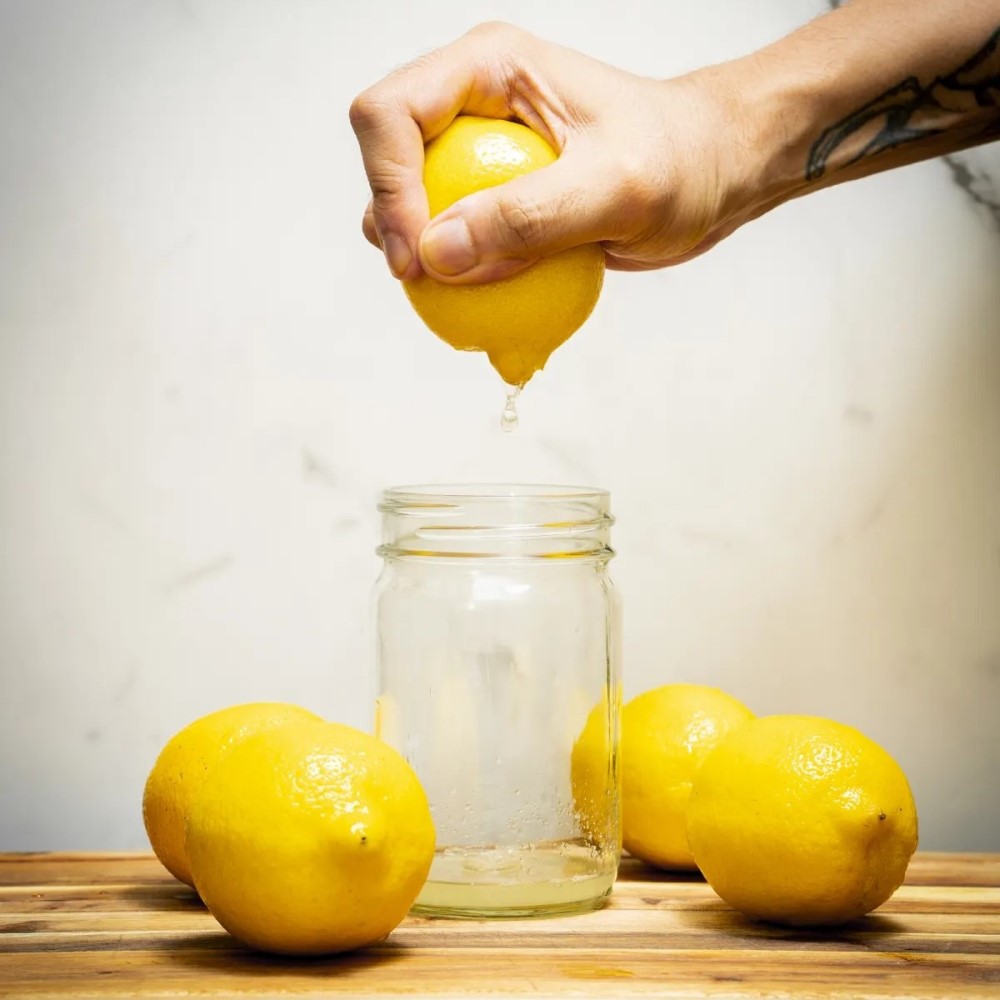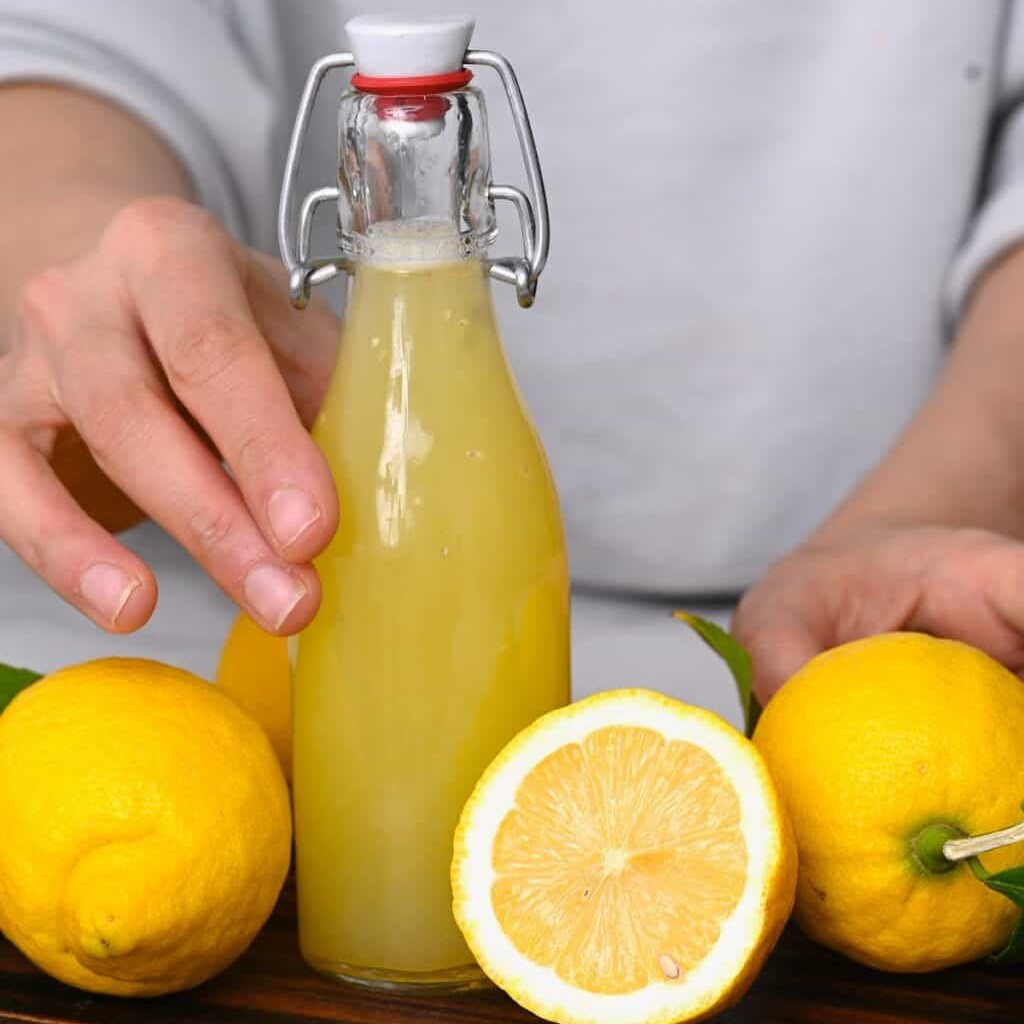
Lemons are a versatile fruit, packed with flavor and health benefits. Whether you’re preparing a refreshing drink, enhancing a recipe, or seeking a natural cleaning solution, fresh lemon juice can be incredibly useful. However, not everyone owns a juicer. Fortunately, there are several effective ways how to juice a lemon without a juicer. In this comprehensive guide, you will discover various methods to extract lemon juice effortlessly, ensuring you never miss out on the tangy goodness of fresh lemons.
 Simple Methods to Juice a Lemon Without a Juicer
Simple Methods to Juice a Lemon Without a Juicer
When you need to juice a lemon without a juicer, several methods can help you achieve the desired result. Each technique varies in complexity and the tools required, but they all effectively extract juice from the lemon. Below, we explore some of the most reliable methods.
Using a Fork or Spoon
One of the simplest ways how to juice a lemon without a juicer involves using a fork or spoon. Start by rolling the lemon firmly on a countertop to soften it, which helps release more juice. Next, cut the lemon in half and hold it over a bowl. Insert a fork or spoon into the flesh of the lemon and twist it while squeezing the lemon. This action helps break down the pulp and extract the juice efficiently.
Rolling and Squeezing Technique
Another straightforward method is the rolling and squeezing technique. Begin by rolling the lemon on a flat surface with your palm, applying firm pressure. This breaks down the internal membranes and makes the lemon easier to juice. After rolling, cut the lemon in half and use your hands to squeeze out the juice. For added efficiency, you can twist the lemon halves as you squeeze, further extracting the maximum amount of juice.
Microwave and Strainer Method
If you prefer a method that requires minimal manual effort, consider the microwave and strainer approach. First, roll the lemon to soften it, then microwave it for about 20 seconds. This heating process helps release more juice. After microwaving, cut the lemon and juice it by hand or with a utensil. To remove the pulp and seeds, pour the juice through a fine strainer into a container. This method ensures you get clean, pulp-free lemon juice.
Shaking in a Plastic Bag
For a creative and mess-free method, you can juice a lemon by shaking it in a plastic bag. Start by cutting the lemon in half and placing it in a sturdy plastic zip-top bag. Seal the bag tightly, ensuring there are no leaks. Next, use a rolling pin or similar object to roll and press the lemon inside the bag. The pressure will cause the juice to be extracted and collect in the bottom of the bag. Finally, open the bag and pour the juice into a bowl through a strainer.
 Tips for Maximizing Lemon Juice Extraction
Tips for Maximizing Lemon Juice Extraction
To get the most juice out of your lemons when you’re figuring out how to juice a lemon without a juicer, consider these useful tips. These strategies enhance the efficiency of juice extraction, ensuring you receive the maximum yield from each lemon.
Selecting the Right Lemons
Choosing the right lemons is crucial for optimal juice extraction. Opt for fresh, plump lemons that feel heavy for their size. These lemons typically contain more juice compared to lighter, less firm ones. Additionally, look for lemons with smooth, bright skin, as they are likely to be juicier and more flavorful.
Preparing the Lemons Before Juicing
Properly preparing your lemons before juicing can significantly increase the amount of juice you extract. Begin by washing the lemons thoroughly to remove any dirt or wax. Then, roll each lemon firmly on the countertop with your palm to break down the internal membranes. This action makes the lemons softer and easier to juice. For an extra boost, you can microwave the rolled lemons for 10-20 seconds to further loosen the juice.
Proper Squeezing Techniques
Using the right squeezing techniques is essential when you’re learning how to juice a lemon without a juicer. Hold the lemon half firmly over your bowl, with the cut side facing downward. Apply consistent and even pressure while twisting the lemon to break up the pulp. Using kitchen gloves can protect your hands from the acidity and prevent slipping. Additionally, using both hands to squeeze can help you apply more force, extracting more juice efficiently.
Common Mistakes to Avoid When Juicing Without a Juicer
When exploring how to juice a lemon without a juicer, it’s easy to encounter some common pitfalls. Being aware of these mistakes can help you achieve better results and make the juicing process smoother.
Overlooking the Importance of Rolling
One common mistake is neglecting to roll the lemons before juicing. Rolling the lemon helps soften the fruit and breaks down the internal membranes, making it easier to extract juice. Without this step, you might find it challenging to get sufficient juice, especially when using methods like hand squeezing or with a fork.
Not Straining the Juice Properly
Another frequent error is failing to strain the juice effectively. Lemon juice often contains pulp and seeds, which can affect the texture of your final product. If you’re using a method like squeezing by hand or with a fork, make sure to pour the juice through a fine strainer or cheesecloth to remove any unwanted particles. This step ensures you receive smooth, clean juice suitable for your intended use.
Underestimating the Power of Freshness
Using overripe or underripe lemons can significantly impact the juice yield and flavor. Underripe lemons tend to have lower juice content and a more acidic taste, while overripe lemons might have a mushy texture, making them difficult to juice without a machine. Selecting fresh, ripe lemons is essential for maximizing juice extraction and achieving the best flavor.
 Creative Uses for Your Fresh Lemon Juice
Creative Uses for Your Fresh Lemon Juice
Once you’ve mastered how to juice a lemon without a juicer, you can explore various creative applications for your fresh lemon juice. Its versatility extends beyond just beverages, offering advantages in cooking, cleaning, and even personal care.
Culinary Applications
In the kitchen, fresh lemon juice can enhance a wide array of dishes and drinks. It’s perfect for making lemonade, salad dressings, marinades, and sauces. Additionally, lemon juice can brighten the flavors of fish, poultry, and vegetables, adding a zesty kick to your meals. For baking, it can be used in cakes, pastries, and desserts to provide a tangy contrast to sweetness.
Household Cleaning Uses
Lemon juice is a natural and effective cleaning agent. Its acidity allows it to cut through grease, remove stains, and eliminate odors. You can use fresh lemon juice to clean countertops, utensils, and cutting boards. Moreover, it can be diluted with water to create a versatile all-purpose cleaner. Combining lemon juice with baking soda creates a powerful paste for tackling tougher stains and grime.
Health and Beauty Benefits
Beyond the kitchen and cleaning, fresh lemon juice offers several health benefits. It can be used as a natural remedy for sore throats when mixed with warm water and honey. Additionally, lemon juice can brighten your complexion and act as a gentle exfoliant when applied to the skin. Its antibacterial properties make it effective for treating minor skin infections and acne.
Additional Methods to Juice a Lemon Without a Juicer
If you’ve tried the basic methods and are looking for more ways how to juice a lemon without a juicer, consider these additional techniques. Each method provides a unique approach, catering to different preferences and available tools.
Using a Citrus Reamer
A citrus reamer is an excellent tool for juicing lemons without a juicer. If you have a reamer on hand, it simplifies the process. Simply cut the lemon in half and insert the reamer into the flesh. Twist the reamer while applying pressure to extract the juice. This method is efficient and minimizes effort, yielding a substantial amount of juice.
Utilizing a Cheese Grater
A cheese grater can also be repurposed to juice a lemon without a juicer. Start by grating the lemon flesh into a bowl, being careful to avoid the bitter white pith. Once grated, gather the pulp and press it firmly to extract the juice. This method works well if you don’t have specialized juicing tools available.
Blender or Food Processor Method
For those who have a blender or food processor, this method can be quite effective. Begin by cutting the lemon into smaller pieces, removing any seeds. Place the lemon pieces into the blender or food processor and pulse until finely chopped. Then, use a fine mesh strainer or cheesecloth to separate the juice from the pulp. This technique is especially useful when you need larger quantities of lemon juice.
 Enhancing Your Lemon Juicing Experience
Enhancing Your Lemon Juicing Experience
To make the most out of your lemon juicing efforts, implementing certain enhancements can be beneficial. These improvements can increase efficiency, reduce waste, and ensure a higher quality of juice extraction.
Pre-Chilling the Lemons
Chilling your lemons before juicing can make the process easier. Cold lemons are firmer, allowing you to apply more pressure without the fruit becoming overly soft. Additionally, cold lemons may release more juice, enhancing the overall yield. Therefore, consider refrigerating your lemons for a few hours before you begin juicing.
Using Room Temperature Lemons
Alternatively, allowing your lemons to come to room temperature before juicing can also be advantageous. Room temperature lemons are easier to squeeze and often yield more juice compared to cold ones. If you’ve stored your lemons in the refrigerator, take them out and let them sit at room temperature for about 15-20 minutes before juicing.
Combining Methods for Maximum Yield
Sometimes, combining different juicing methods can help you extract the maximum amount of juice. For instance, you can first use the rolling and squeezing technique, followed by a manual press or reamer to extract any remaining juice. This multi-step approach ensures you get every drop from your lemons, reducing waste and maximizing efficiency.
Maintaining Your Juicing Tools
Even though you might not have a traditional juicer, maintaining whatever tools you use to juice lemons is essential. Proper care ensures longevity and consistent performance, making the process smoother each time.
Cleaning Your Tools Thoroughly
After juicing lemons, it’s crucial to clean your tools thoroughly. Residual lemon juice can cause corrosion or mold growth, especially if the tools are not dried properly. Wash utensils like forks, spoons, reamers, and strainers with warm soapy water, and ensure they are completely dry before storing them.
Storing Your Tools Appropriately
Proper storage of your juicing tools can prevent damage and maintain their functionality. Keep tools in a dry, clean place where they won’t be exposed to moisture or contaminants. Using tool organizers or dedicated kitchen drawers can help keep everything in order and easily accessible when you need to juice lemons again.
 Final Thoughts
Final Thoughts
In conclusion, knowing how to juice a lemon without a juicer is an invaluable skill that offers flexibility and convenience in various situations. Whether you’re in a kitchen without specialized equipment or seeking to reduce your environmental impact, these methods provide effective solutions for extracting fresh lemon juice. By selecting the right lemons, preparing them properly, and employing the appropriate juicing techniques, you can enjoy the vibrant flavor and numerous benefits of fresh lemon juice effortlessly. So next time you need lemon juice and don’t have a juicer, remember these methods—how to juice a lemon without a juicer has never been easier or more accessible.